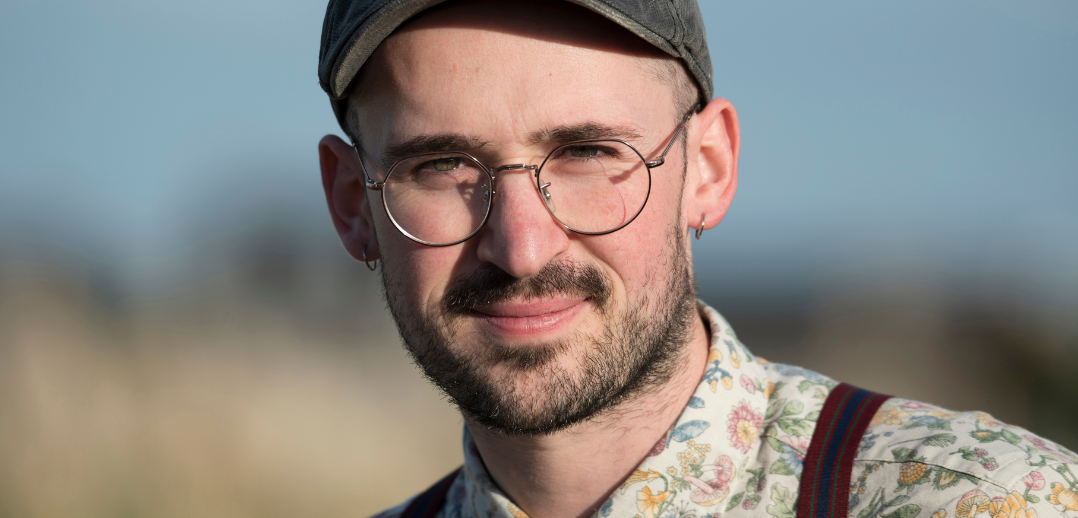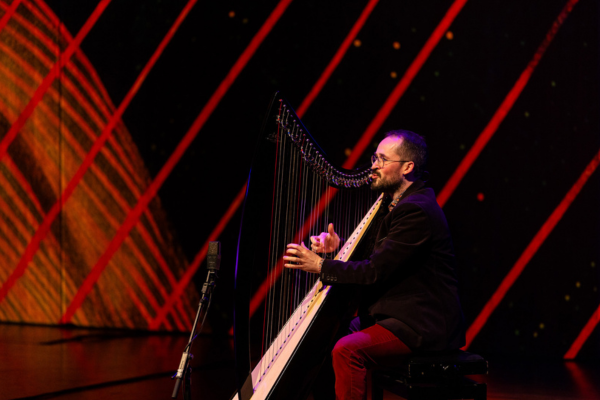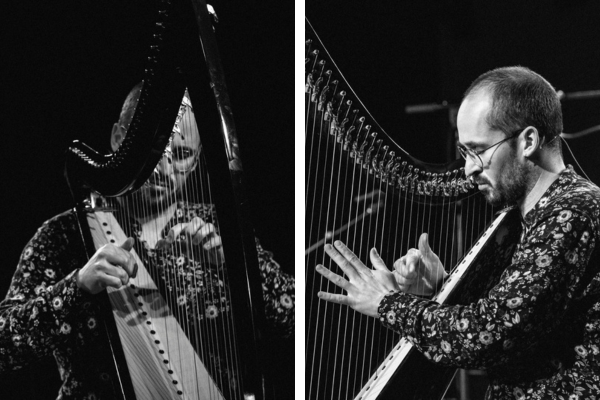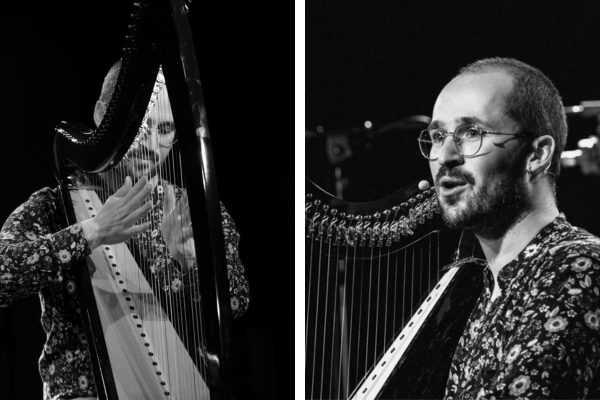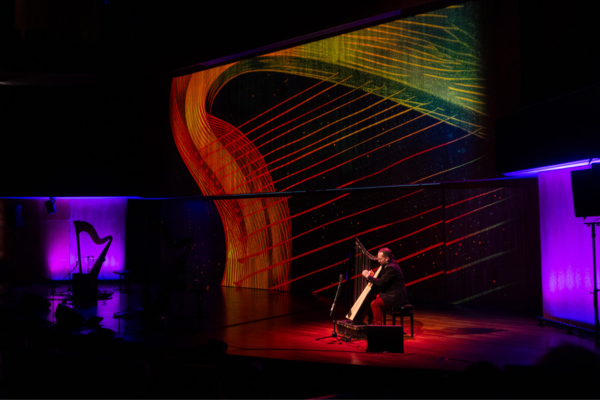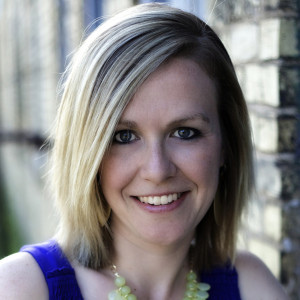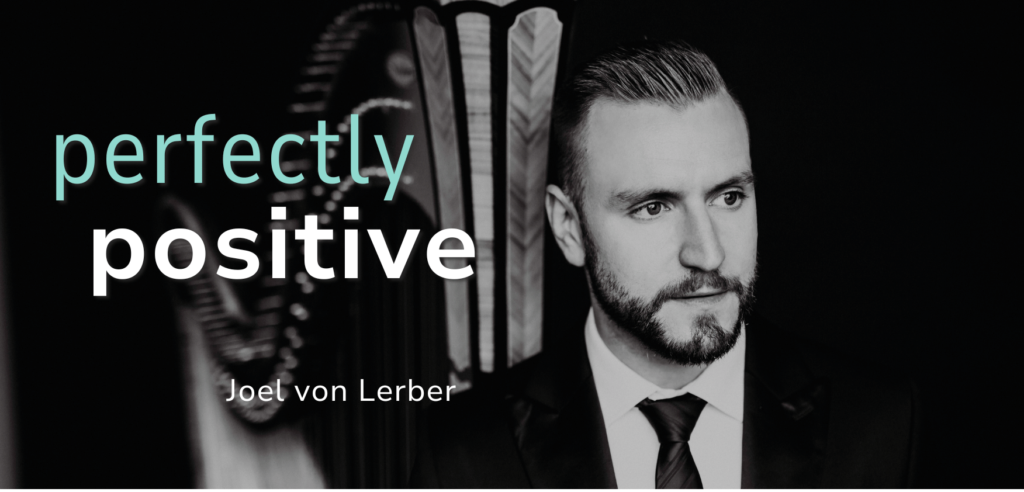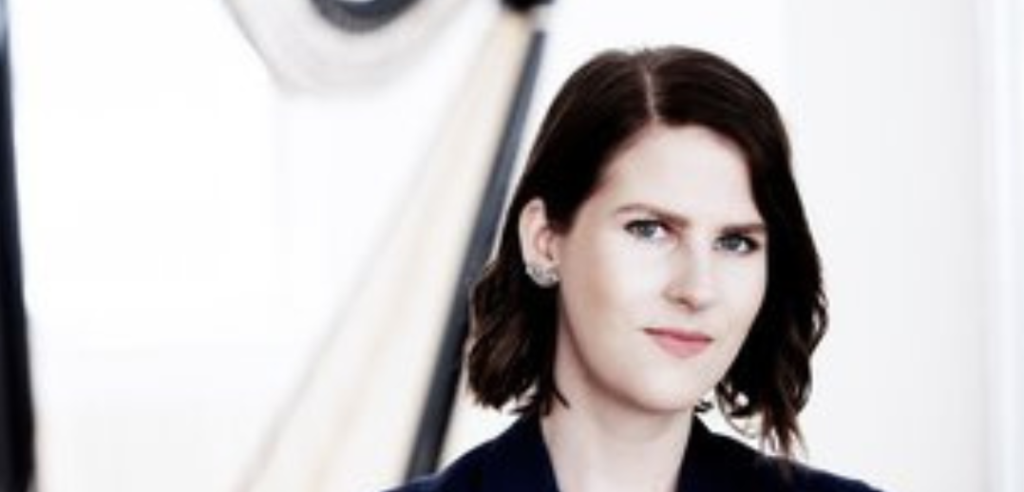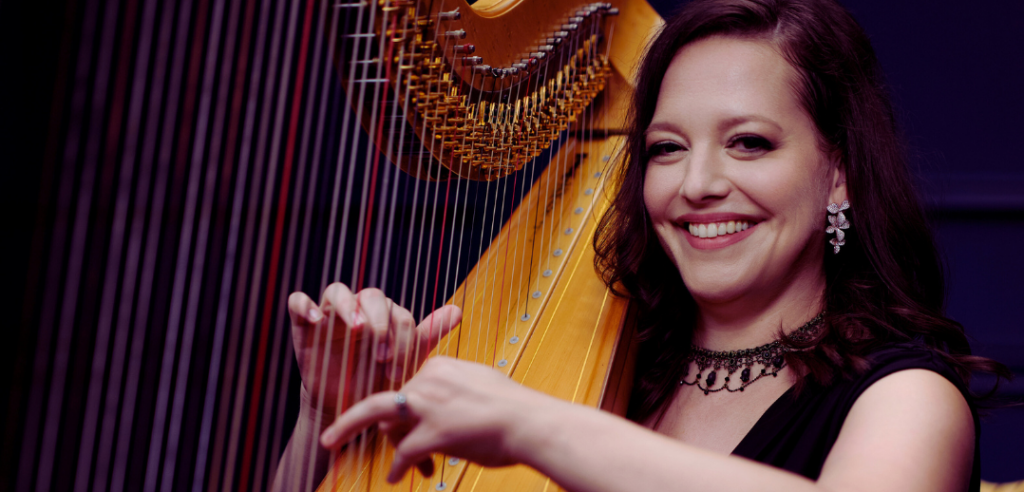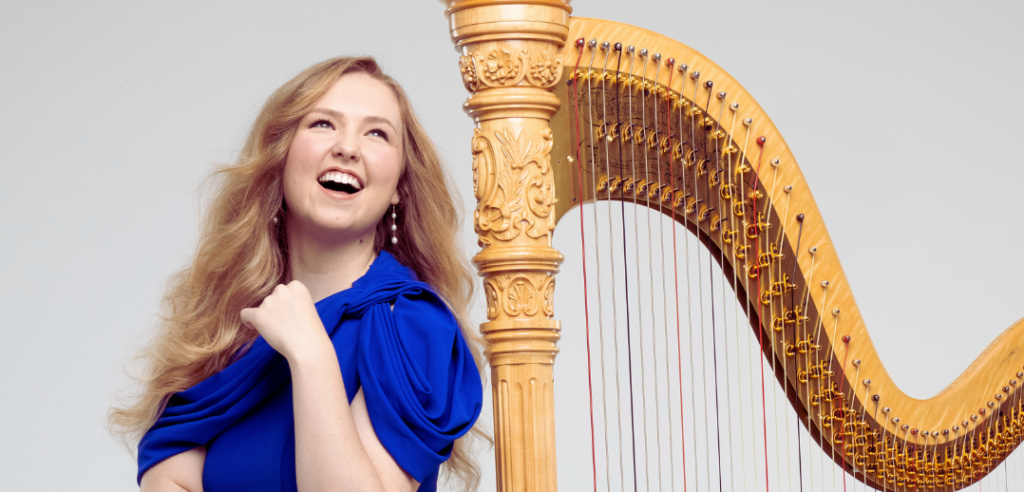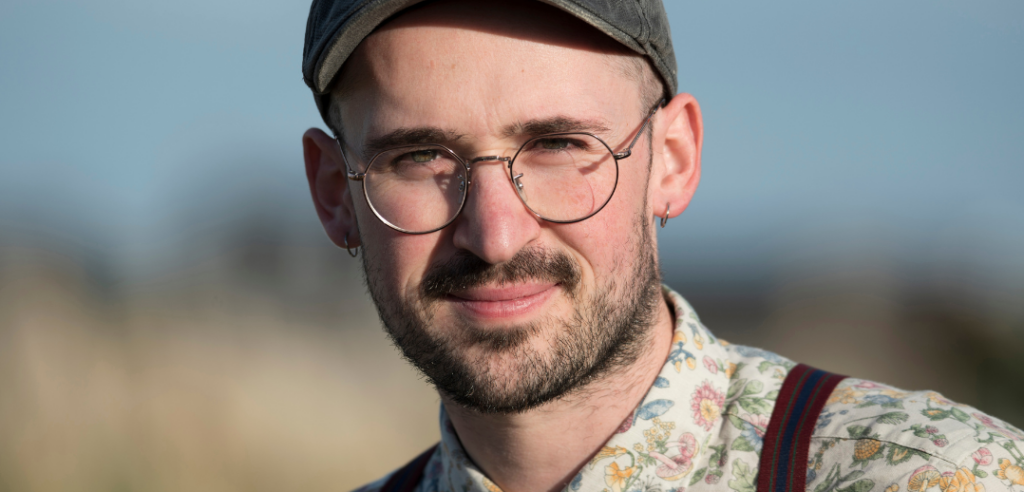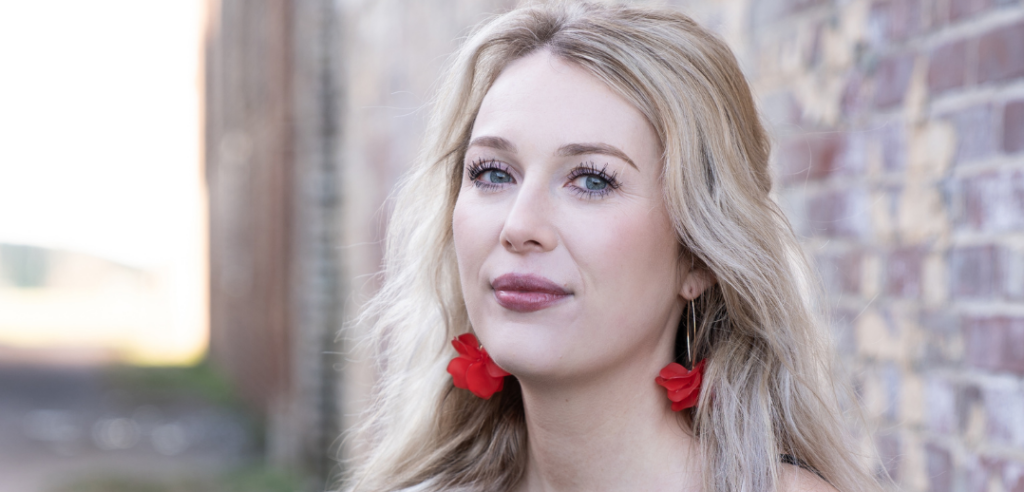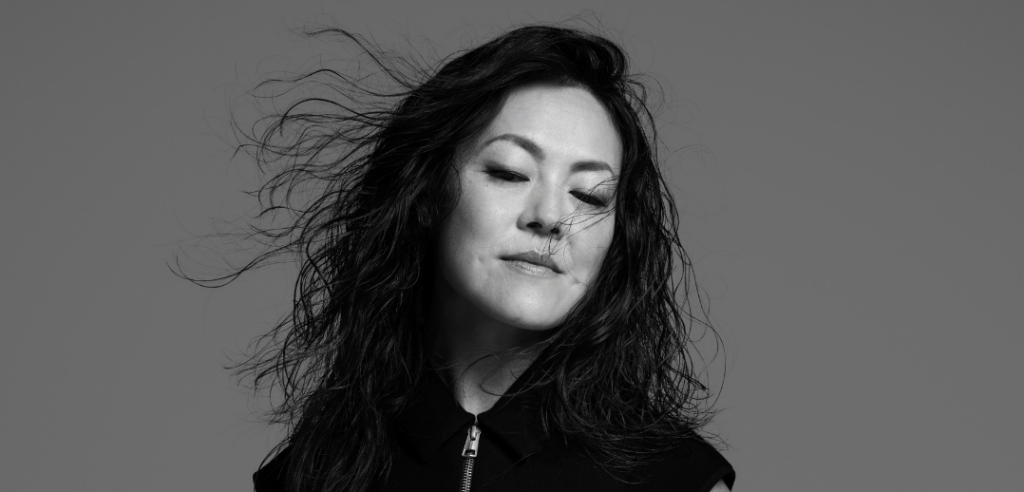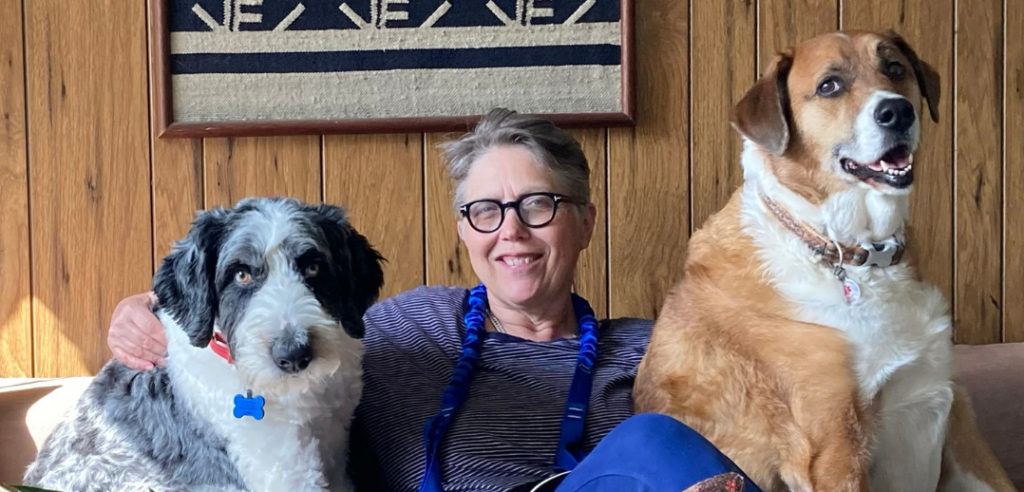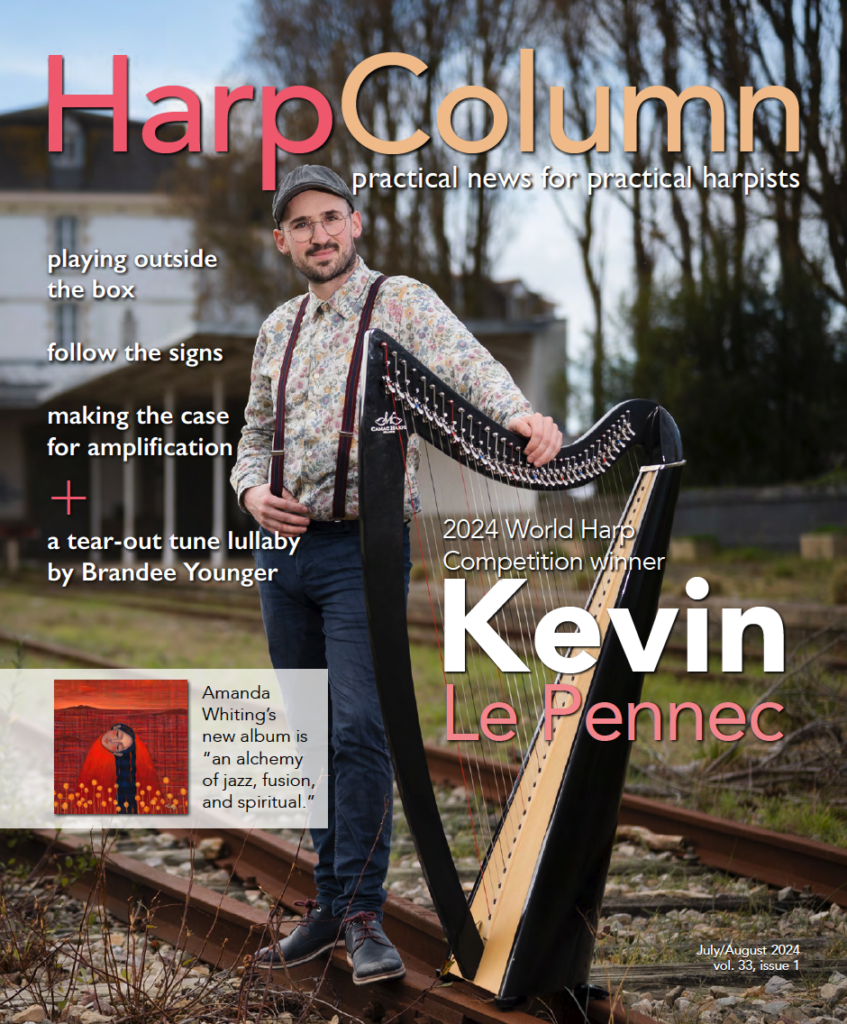Storytellers have always occupied a place of importance in folk music. From medieval troubadours to modern-day singer-songwriters, spinning a tale with a tune creates a special connection with audiences. So it shouldn’t be all that surprising that Breton harpist/singer/song-writer Kevin Le Pennec won the audience prize at the 2024 World Harp Competition in Utrecht, The Netherlands, with his program of original music. Le Pennec also won the event’s first prize. What’s surprising about Le Pennec’s story is that he has only been performing professionally for a few years, having made an about-face career change from nursing to music at age 23. Now a newly-minted international competition winner, the soft-spoken Le Pennec finds his dance card quite full these days with performances, recording sessions, and teaching opportunities. We caught up with him for a Zoom call during a stop in Switzerland earlier this summer to hear the story behind this storyteller.
HC: Congratulations on winning the World Harp Competition—both the first prize and the audience prize! Tell us what that moment felt like when your name was announced as the winner?
KLP: It was a bit surreal for me—I really didn’t expect to actually win these prizes. For me, I was already a winner just to have the experience of participating and going to Utrecht and meeting everyone. So when I heard my name, everything went a bit fuzzy. [Laughs]
HC: I listened to your performance in the final concert, and it was interesting to hear you perform all original songs. It made me wonder what elements of traditional Breton music you brought into your compositions and your performance.
KLP: That’s interesting. The main traditional part I use is the rhythm. I take some dance rhythms from written music and also from some text—there are some ways of speaking that can be similar to what we find in old traditional French songs. There’s also a color in the lyrics that you can recognize and that feels a bit traditional. What I like to do is mix these old ways with some new, like some modern words or modern subjects that are important to me. Also, the melodies can be related to traditional music. They are quite simple melodies, but what makes them interesting is the ornaments.
HC: For our readers who might not be as familiar with Breton music as they are with other Celtic styles, could you tell us a little bit about what differentiates the Breton tradition from other Celtic traditions?
KLP: Some of the roots are similar—we have old European roots for all these traditional dances that can be similar in some Celtic regions. But it’s a way of expressing these roots that is very different from other Celtic regions. The dances are not the same. The color of the melodies is not the same. The rhythm is not the same. For someone who has never heard this music, it can feel like it’s similar, but I do think it’s very different. The culture is different, the way of seeing the world is different, and I think that’s what makes the difference. But there are also similarities, especially in the songs. The lyrics can sometimes talk about the same subjects—historical things or the way people used to live, situations between men and women most of the time. The feel and the groove of the music is just different. If you had an Irish melody and a Breton melody next to each other, you could hear their difference quite well, because they don’t use the same way of phrasing the melody. There’s not so much mélisme [singing of a single syllable of text while moving between several different notes in succession] in Breton music, and there is a lot in Irish music, for example. Those distinctions make them quite different.
HC: You mentioned that you bring some modern elements and themes into your music. Tell us about the inspiration for your compositions.
KLP: There were several inspirations. Most of the songs were inspired by situations I saw or that I, myself, lived. For example, in my program, there was one song I wrote for my brother because he asked me to write a song about a hero with the dark side, so that’s what inspired me. For another song, I talked about homosexuality—I used a theme similar to traditional music, a love story between a shoemaker and a merchant. They are very typical characters from traditional written music, and I decided to make a love story between them as two men. That’s something you would never hear in traditional music, but I tried to make it a bit subtle. I also wrote this song about inclusivity called The Gendered Ball. It’s an event I’ve been to, and I played there, and the atmosphere was really nice. Everyone could come and be the way they wanted—anything was fine because there was no discrimination about gender. I also talked about masculism, because, growing up, I never felt really at home in a group of men. I felt like I had to play a character which was a bit manly and made a lot of jokes and used some casual sexism. It was not for me, really. So my inspirations were all subjects that were dear to me, and I put them together in one program so I can talk about these things with the people in the audience.
HC: When you’re writing new music, what comes first—the music or the lyrics? Or do they evolve together?
KLP: First is the rhythm, for me. There’s a rhythm in my head which is going to define all of the syllables of the verses. I don’t know what I’m going to talk about when I first start to write. I write the first sentence that comes to mind and fits into this rhythm. Then there’s the second sentence, and a third, and from there I can let my imagination think about what subjects I want to talk about and what story I want to make. From there, the rhythm evolves into a melody. And as long as I see the words matching with the melody and the rhythm, I continue to write. It’s actually a very quick process. I do one song in one hour, sometimes in half an hour, sometimes in two hours, but once I start, I don’t stop until I finish the song.
HC: That’s amazing. It sounds like an intense process.
KLP: Yes, it’s really intense, where I forget everything else going on, and I’m completely into the songs.
HC: I love to hear about the creative process for composers and writers because it’s so different for everyone. I was very interested to find out that you were a nurse, and you left that profession to go to conservatory to study music.
KLP: Yes, exactly.
HC: That’s amazing. What drew you away from your profession? What was it about music that convinced you to make the change?
KLP: When I was studying nursing is actually when I started to practice the harp more. I was playing the harp a lot, but I was not in any harp school yet. For four years I did harp by myself, actually. I was really into Irish music at this time, and I started to learn melodies and to arrange them, because that’s what I liked to do with music. When I graduated as a nurse, I worked two and a half years, and during which I practiced [the harp] even more. It was like an obsession. The hospital where I was working assigned me to an intensive pediatric department. For me it was a bit too much. I really didn’t want to be there. But at the hospital, they never ask you if you want to go somewhere. You just go where you are told. There was this moment when I thought, is that what I want to do with my life? I was trying to project myself in the future, and I thought, this profession is good, but it’s not what I want for my life. That’s not how I want to live, that’s not the stress I want to feel. I can be quite sensitive to people hurting; it was a bit too much, I think. So then I thought about music, because I was really doing a lot of music [on my own]. And I thought, wait, why not? I was 23 at the time, and I thought maybe this is the last moment to pursue music. So I decided to go to the conservatory, and I did two years there, and then upper studies. It all went very fast.
HC: That’s amazing. You were clearly musical before going to the conservatory. What role did music play in your life as you were growing up?
KLP: For me, singing was the thing I would do alone in my room, and it really helped me express emotions that I had. The harp was always a bit more difficult. It was more like a hobby. When I was a child I had a harp lesson every week, and I liked it, but I think what was interesting to me at the time was that the harp was original. There weren’t a lot of people that played the harp, so I think it felt special. Growing up, I was happy to show the instrument to my friends and to other people. I enjoyed performing in front of people. Later, when I realized I could do harp by myself, that’s what really made me fond of the instrument. When I discovered the harp world and all the techniques, all the people playing it, and all of the ways of expressing yourself with this instrument, that’s when I realized that it was so cool. I did more and more and more, and now the harp is also a way of expressing emotions and expressing something inside you. Music helped me express my emotions and also my creativity. I love to create. That’s what I love best in music.
HC: Who are the musicians or artists that have influenced you?
KLP: Well, all my teachers have influenced me. I would say that one of the main teachers that really influenced me was Nikolaz Cadoret. He was my teacher during my two years at the conservatory, and he really expanded my mind. He’s a creative artist, and he plays so many different kinds of music. He was such an inspiration. But also, the harpists I listened to a lot at the time were Irish and Scottish harpers like Michelle Mulcahy, Laoise Kelly, Corrina Hewat, Catriona McKay, Michael Rooney, Maeve Gilchrist.
HC: You are part of the Collectif Arp—a group of harpists from Brittany who play traditional and contemporary Breton music. Some of this group’s members are musicians you listened to and who influenced you in your journey. What’s it like to be part of this group of amazing musicians that you know at one point you were listening to and drawing inspiration from?
KLP: It felt a bit overwhelming when they asked me. There is another harpist, Morgane Grégory, who is the same age as me, and we both joined the collective at the same time. We both thought, “Oh, wow, we are really at this point where we finally can work with harpists we used to listen to?” It’s quite nice to feel like you’re on the right path. When things like this happen, it helps you to grow and be more confident. It’s interesting, because when I was playing the harp by myself during those four years, I did some workshops with this collective, actually, and those are the people who helped me expand my mind and discover the harp world, which I didn’t know at the time. So it has been so cool to work with them, because they have more experience, and also they have their own musical character. They have their own creative minds, and they always inspire me. We help each other to make a living from music—this collective helps you figure out how to pay the bills and understand all the administrative stuff that you need to know as a new professional musician. It’s really good to have this kind of collective, especially as a harpist. It’s not as popular or mainstream of an instrument, especially in traditional Breton music. Some people would say that the harp cannot make people dance or it’s not made for traditional music. In Brittany, [the harp] was made popular by Alan Stivell [in the 1970s] so it’s quite recent. The collective is a place to discuss these issues between harpists and together project a more diverse image of the harp to the outside world. It’s not just something associated with elves, magicians, and forests, but something a bit more modern and professional; that’s what we want to show. And being a collective allows us to have more influence.
HC: In addition to your solo playing, you also perform with a couple of groups. Tell us about them.
KLP: I’m playing with Morgane Grégory. We did this modern interpretation of traditional Breton, Irish, and Scottish music, and now we are creating new compositions with a different vibe that’s not so related to traditional music. I don’t know where it’s going to take us in the end, but it’s evolving. And then I have a fest noz [Ed.—fest noz is a Breton traditional festival, with dancing in groups and live musicians playing acoustic instruments] group called La Mézanj. I’m not actually playing the harp there—I’m singing with a fiddler and a cellist. This is quite fun. And I just performed with a group called Les Baladins du Faubourg. This was a mix between early music and traditions from the Mediterranean area. I sang some Neapolitan songs and accompanied myself with the harp. It was a big ensemble with maybe 10 or 12 singers and musicians. I also have another new project, which is called Les Irlandais de Bretagne (The Irish from Brittany). This project considers the Irish immigration during the 17th century in Brittany, which is quite a forgotten history, actually. It was rediscovered, and we found that some of the Breton names come from Ireland, and they were transformed into more of a Breton vibe. So the Irish population assimilated in our Breton society.
HC: Wow, you have a lot going on! And I know we just reviewed your debut solo album Á Distance in Harp Column. So with all of these projects going on, what are you most excited about? Is there anything cooking that you are looking forward to?
KLP: Well, I’m recording two albums this year. They aren’t solo albums—solo is for next year. [Laughs] But I just recorded with that fest noz group, La Mézanj, and we are going to release it in September. And for The Irish from Brittany [project], we are recording in October. Those are the main things happening right now. I’m also playing at festivals this summer. But what excites me the most is traveling and meeting new people from different places through music, which I love. It is just the best.
HC: Do you have any advice for the harpists who might be inspired by reading your story?
KLP: The main advice I have is to follow the things you’re having fun doing. If you are obliging yourself to do certain music, then you’re not really into it. I don’t think that’s good actually, even if you can play it wonderfully. For me, it’s more about being passionate. If you find that thing that really ignites your passion, follow that. This allows you to grow and put even more creativity into who you really are. And, of course, you must also work hard at your passion, for sure. •






